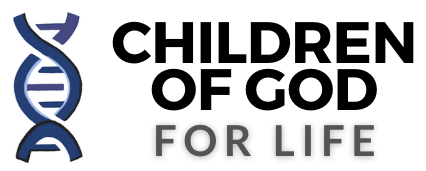Enbrel:
The WI-26 aborted fetal cell line is not something you will find in the package insert since its incorporated in the recombinant DNA. All the package insert states is “recombinant DNA grown on chinese hamster ovary”. There is a lot of documentation to go through but the original patent is found here: http://patft.uspto.gov/netacgi/nph-Parser?Sect1=PTO1&Sect2=HITOFF&d=PALL&p=1&u=%2Fnetahtml%2FPTO%2Fsrchnum.htm&r=1&f=G&l=50&s1=5,712,155.PN.&OS=PN/5,712,155&RS=PN/5,712,155
To show this is indeed the Enbrel patent, the patent number is registered with the FDA here:
http://www.fda.gov/ohrms/dockets/dailys/04/july04/071504/071504.htm#99E1086
1999E-1086 Enbrel, Patent No. 5,712,155
To save you a little time, here is the pertinent parts of the patent involving WI-26 aborted fetal cell line:
“The human TNF receptor cDNAs of the present invention were isolated by the method of direct expression cloning. A cDNA library was constructed by first isolating cytoplasmic mRNA from the human fibroblast cell line WI-26 VA4. Polyadenylated RNA was isolated and used to prepare double-stranded cDNA. Purified cDNA fragments were then ligated into pCAV/NOT vector DNA which uses regulatory sequences derived from pDC201 (a derivative of pMLSV, previously described by Cosman et al., Nature 312:768, 1984), SV40 and cytomegalovirus DNA, described in detail below in Example 2. pCAV/NOT has been deposited with the American Type Culture Collection under accession No. ATCC 68014.
The pCAV/NOT vectors containing the WI26-VA4 cDNA fragments were transformed into E. coli strain DH5.alpha.. Transformants were plated to provide approximately 800 colonies per plate. The resulting colonies were harvested and each pool used to prepare plasmid DNA for transfection into COS-7 cells essentially as described by Cosman et al.” (Nature 312:768, 1984) and Luthman et al. (Nucl. Acid Res. 11:1295, 1983)
WI-26 is listed on the American Type Cell Culture website as noted above (ATCC number 68014)
http://atcc.org/ATCCAdvancedCatalogSearch/ProductDetails/tabid/452/Default.aspx?ATCCNum=68014&Template=uniqueClones
– And also in the original researcher’s paper which is:
Text References for WI-26:
L. Hayflick and P.S.Moorhead, The Serial Cultivation of Human Diploid Cell Strains, Experimental Cell Research, 1961, 25, 591- L. Hayflick, The Limited In Vitro Lifetime of Human Diploid Cell Strains, Experimental Cell Research, 37, 611-636, 1965 It is on page 615 of the publication-
“WI-26 was derived from male fetal human lung and WI-38 and WI-44 from female human fetal lung. All embryos were obtained from surgical abortions and were of approximately three months’ gestation.”
Aranesp and Epogen, Procrit (Epogen) (Epoetin alfa) Amgen/Ortho Biotech
http://www.accessdata.fda.gov/drugsatfda_docs/label/2008/103234s5196pi.pdf
“It has a molecular weight of 30,400 daltons and is produced by mammalian cells into which the human erythropoietin gene has been introduced.”
Info on the human erythropoietin gene:
http://www.ncbi.nlm.nih.gov/pmc/articles/PMC391376/?page=1
MATERIALS AND METHODS Human Genomic Library. A Charon 4A phage-borne human fetal liver genomic library prepared according to the procedure of Lawn et al. (18) was obtained from Tom Maniatis (Harvard University).
(18) Lawn, R. M., Fritsch, E. F., Parker, R. C., Blake, G. & Maniatis, T. (1978) Cell 15, 1157-1174.
That is found here: http://www.ncbi.nlm.nih.gov/pmc/articles/PMC350439/pdf/pnas00499-0116.pdf
“MATERIALS AND METHODS DNA Isolation and Fractionation. Liver tissue was obtained from a second-trimester Caucasian fetus aborted for psychosocial indications.”
Aranesp (Darbepoetin alfa) Amgen patent:
http://patft.uspto.gov/netacgi/nph-Parser?Sect1=PTO1&Sect2=HITOFF&d=PALL&p=1&u=%2Fnetahtml%2FPTO%2Fsrchnum.htm&r=1&f=G&l=50&s1=5,618,698.PN.&OS=PN/5,618,698&RS=PN/5,618,698
EXAMPLE 4
A. Human Genomic Library
“A Ch4A phage-borne human fetal liver genomic library prepared according to the procedures of Lawn, et al., Cell, supra was obtained and maintained for use in a plaque hybridization assay.
B. Plaque Hybridization Procedures For Screening Human Genomic Library
Phage particles were lysed and the DNAs were fixed on filters (50,000 plaques per filter) according to the procedures of Woo, Methods In Enzymology, 68, pp. 389-395 (1979) except for the use of GeneScreen Plus filters (New England Nuclear Catalog No. NEF-972) and NZYAM plates (NaCl, 5 g; MgCl.sub.2 –6H.sub.2 O, 2 g; NZ-Amine A, 10 g; yeast extract, 5 g; casamino acids, 2 g; maltose; 2 g; and agar, 15 g per liter).
EXAMPLE 5
Nucleotide sequence analysis of one of the positive clones (designated .lambda.hE1, deposited with the American Type Culture Collection, 12301 Parklawn drive, Rockville, Md., under deposit accession No. A.T.C.C. 40381 on Oct. 20, 1987) was carried out and results obtained to date are set out in FIG. 6, comprising portions 6A, 6B, 6C, 6D, and 6E.
http://www.atcc.org/Products/All/40381.aspx – fetal liver
EXAMPLE 7
A. Initial EPO Expression System Involving COS-1 Cells
“The system selected for initial attempts at microbial synthesis of isolatable quantities of human EPO polypeptide material coded for by the human genomic DNA EPO clone, also involved expression in mammalian host cells (i.e., COS-1 cells, A.T.C.C. No. CRL-1650). The human EPO gene was first sub-cloned into a “shuttle” vector which is capable of autonomous replication in both E. coli hosts (by virtue of the presence of pBR322 derived DNA) and in the mammalian cell line COS-1 (by virtue of the presence of SV40 virus derived DNA). The shuttle vector, containing the EPO gene, was then transfected into COS-1 cells. EPO polypeptide material was produced in the transfected cells and secreted into the cell culture media.
More specifically, an expression vector was constructed according to the following procedures. DNA isolated from lambda clone .lambda.hE1, containing the human genomic EPO gene, was digested with BamHI and HindIII restriction endonucleases, and a 5.6 Kb DNA fragment known to contain the entire EPO gene was isolated. This fragment was mixed and ligated with the bacterial plasmid pUC8 (Bethesda Research Laboratories, Inc.) which had been similarly digested, creating the intermediate plasmid “pUC8-HuE”, providing a convenient source of this restriction fragment.”

I volunteered to take part in the Novavax study back in Early 2021. I was thrilled that an ethical option…
This article is dated 13 Aug 2021.
God bless you both and your growing family! Your work has been appreciated beyond words. I look forward to your…
Science and medicine proclaim to want to save lives with sick innovation and research like we just read about but…
Want information to be in English
Dear GOD! Have mercy on this. Makes me want to vomit.